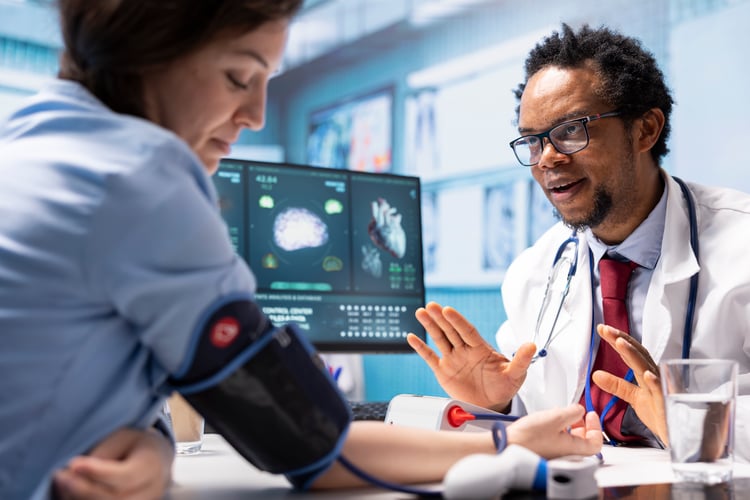
Connected Health is Changing How We Collect Data
Written by Marc Alringer
Connected Health is Changing How We Collect Data
(updated 23 April 2018)
Technology and healthcare frequently operate hand in hand. In fact, connected health devices like Fitbit activity trackers and health and wellness mobile apps today enable individuals to monitor what they eat, how much they exercise, and their overall well-being.
Additionally, the Internet of Things (IoT) creates many opportunities for medical device companies to offer cloud-based platforms to facilitate the wireless transfer, storage, and display of clinical data. With IoT in healthcare devices and apps, medical personnel can retrieve real-time patient data and provide timely, accurate, and data-driven diagnoses and treatments.
Digital Health Technology Paves the Way for Improved Virtual Care
Imagine what it would be like if a doctor could track a patient’s heart rate, blood oxygen levels, blood sugar, and other health data without ever requiring a patient to leave his or her home. Now, digital health technology provides just that – and much more.
Healthcare technology innovations like remote monitoring and telehealth are becoming exceedingly important to medical personnel and patients alike. Remote monitoring programs allow medical professionals to use IoT devices to track various patient health data over many weeks or months. This way, medical personnel can find out how a patient is responding to a treatment and ensure optimal results. Meanwhile, telehealth involves the diagnosis, treatment, care management, education, and self-management of a patient’s health remotely. Telehealth technologies ensure a doctor and patient can connect with one another much in the same way they would during a traditional office visit – all without having to leave their respective locations.
Ultimately, IoT in healthcare technologies helps medical professionals provide comprehensive patient care and treatment and boost patient satisfaction and retention. At the same time, patients can use these technologies to quickly, effortlessly, and securely share health data with authorized medical personnel thanks to intuitive, user-friendly IoT in healthcare apps and devices.
IoT in Healthcare Improves Patient Connectivity
IoT health apps and devices foster patient connectivity – something that may help medical professionals and patients build long-lasting partnerships. They enable medical personnel to collect and transmit a patient’s health data wirelessly via the internet. Then, medical personnel can maintain a secure data repository where they can read and analyze patient data any time they choose.
IoT in healthcare apps and devices make it simple for patients to automatically transmit health data to authorized medical personnel. For example, QardioCore is an ECG monitor that enables users to continuously collect health data related to their blood pressure, cholesterol, and other medical conditions. It also allows users to instantly send this /information to healthcare providers. That way, people can use QardioCore to keep track of their personal well-being and provide up-to-date health data to their healthcare provider without physical office visits.
Biopharmaceutical Companies Capitalize on Connected Health
Count biopharmaceutical companies among the healthcare firms ready to leverage IoT in healthcare technologies. Some biopharma companies are now using IoT apps and devices to understand the performance of products. As a result, biopharma companies can retrieve a wide range of patient health data to increase the efficacy of medicines, match the right product to a patient before it is prescribed, and track patient services to ensure the best possible outcome after a medicine is used.
Plus, biopharma firms can utilize connected health technologies to interact with clinical trial participants around the globe. A clinical trial participant, for instance, can wear a blood pressure cuff or temperature monitor – regardless of location – and have device data flow through to a clinical trial database. This allows biopharma companies to monitor safety issues or efficacy data and analyze clinical trial results in real-time.
IoT in healthcare technologies also helps streamline clinical trials. They reduce the risk of duplication of effort, transcription errors, delays, and missed data. This means biopharma companies can simultaneously improve their clinical trials and reduce the time and resources required to complete these trials.
Why Hospitals and other Healthcare Providers Need to Leverage the IoT
The global healthcare IoT market is projected to expand at a compound annual growth rate (CAGR) of 30.8% between 2017 and 2022, according to market research firm MarketsandMarkets. Furthermore, MarketsandMarkets estimates this sector will be worth more than $158 billion by 2022.
As IoT in healthcare adoption increases, new IoT apps and devices will empower medical professionals like never before. Hospitals and other healthcare providers that explore IoT apps and devices today can take the first step to incorporate connected health technologies into their everyday operations. As such, these healthcare providers may be better equipped than others to use the IoT to reduce their operating costs and boost their productivity and efficiency.
Seamgen works with clients in many industries, and we are happy to help an organization craft a customized IoT deployment strategy. To find out more, please contact us today.
Another concept that crosses over from behavioral economics to connected health is “loss aversion,” increased sensitivity to losses, rather than gains. Loss aversion may explain why some people struggle to cut out unhealthy practices in their everyday lives, even when they are aware of the harm they are doing to themselves.
Striving for a long-term health goal can be difficult when having to eliminate many habits and behaviors in the short-term. With connected devices, more data is readily available, facilitating the tracking of short-term gains to combat the short-term losses.
People seek immediate rewards when they know there are immediate consequences, and the data connected health can deliver changes the immediacy with which healthier patterns can be noticed and appreciated.
What Does the Future Hold
Big data has successfully infiltrated the health sector and is here to stay. Successful companies in the future will have to blend their health services with connected devices.
With this much data available, there is a great need for statisticians to rummage through it all. Proper handling and analysis of the data can lead to increased treatment capabilities and monetary savings in the long-run.








